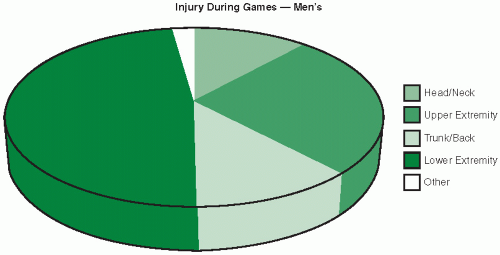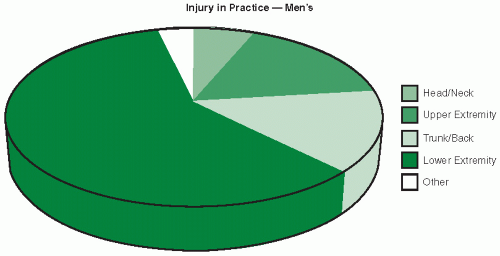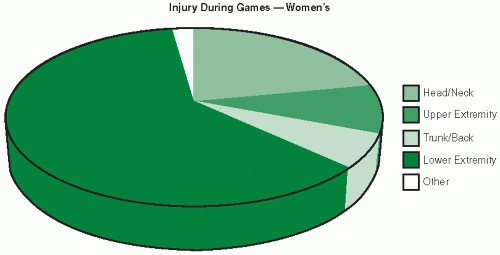Lacrosse
Thad J. Barkdull
INTRODUCTION
History (17)
Considered to be the oldest sport in North America.
Derived from baggataway, a game French observed Native Americans playing in 17th century Canada.
Stick, or lacrosse, used in game comes from appearance similar to bishop’s crosier or crosse.
In 1879, Canada formed the National Lacrosse Association (now the Canadian Lacrosse Association).
Eleven U.S. men’s college and club teams formed the National Lacrosse Association in 1879.
By 1950, over 200 teams existed in the United States.
Lacrosse is still the National Summer Sport of Canada.
Demographics (U.S. Lacrosse)
Estimated that 568,021 people played organized lacrosse in 2009.
□ Over 340,000 men
□ Over 220,000 women
Nearly 19,000 men participated in over 250 universities with sanctioned programs.
Over 136,000 men at 1,600 high schools now have varsity programs.
Over 250 universities have sanctioned women’s programs for 12,868 women athletes.
As of 2010, lacrosse was a sanctioned sport in 19 state high school athletic associations.
There are currently two professional leagues: Major League Lacrosse (indoor or box) and the National Lacrosse League (outdoor or field).
The game
Men’s field lacrosse (16)
□ Ten players per side:
Three attackmen (offense), three defensemen (defense), three midfielders (both), and one goalie (defense)
Teams may allow a maximum of six players on the offensive half and seven on the defensive half.
□ The field is 110 × 60 yards.
□ Goals are 6-feet square with a 9-feet diameter circular crease around them.
□ Substitutions may occur during play stoppage or during play (similar to hockey).
□ Players may pass the ball or run while cradling the ball in their stick, or crosse.
□ The object is to score more points than the opponent by putting the ball into the opposition’s goal.
□ Players may hit an opposing player who controls the ball or is within 5 yards of ball.
□ Players may hit an opponent’s stick or gloved hand with their own stick.
Women’s field lacrosse (14)
□ Twelve players: One goalie, four attackers, four defenders, and three midfielders
□ The field is 120 × 70 yards.
□ No contact between players
□ Restraining Line Rule — only seven offensive and eight defensive players in 30-yard area around goal
Box lacrosse
□ Six players per side
□ Played in enclosed area
□ More contact allowed than field lacrosse
Equipment (13)
Crosse or stick
□ Length varies by position.
□ Made of wood, laminated wood, or synthetic material.
□ Attackmen’s and midfielders’ sticks must be 40-42 inches long.
□ Defensemen’s sticks must be 52-72 inches long.
□ The head must be 6.5-10 inches wide, or 10-12 inches for the goalie.
Ball
□ Made of solid rubber
□ 7.75-8 inches in circumference
□ 5-5.25 ounces
Personal equipment
□ Varies by different game and position played
□ Required equipment
All players are required to wear mouthguards.
In men’s game, helmet with full face mask and padded gloves.
Women are currently only required to wear mouthguards and eye protection, although some wear soft helmets (goalies are a notable exception, see below).
□ Goalies
Both men’s and women’s games require head, chest, and throat protection.
The stick has a significantly larger net than sticks of other players.
Athletic cup is optional but highly recommended.
□ Attackmen
Frequently wear elbow pads, shoulder pads, and rib protectors.
Sticks tend to be shorter.
□ Defensemen
Frequently wear less protective gear in the men’s game, often only the required helmet, mouthguard, and gloves.
Have a much longer stick than other players.
□ Midfielders
Often wear less protection than attackmen.
May have longer or shorter stick depending on specialty (defensive midfielders have longer sticks).
INJURY EPIDEMIOLOGY (NCAA INJURY SURVEILLANCE SYSTEM)
The Injury Surveillance System (ISS) was developed by the National Collegiate Athletic Association (NCAA) in 1982 to monitor collegiate athlete injury patterns (3).
The latest data were presented in 2007 as a summary of injury patterns from the 1988-1989 season through the 2003-2004 season in all three NCAA divisions, focusing on 15 different sports (4).
Monitors type of injury, body part injured, severity of injury, field type, field condition, and special equipment worn.
Data are collected by certified athletic trainers at NCAA-sanctioned schools.
Reportable injuries must meet specific criteria (5).
Occurs during practice or contest.
Requires medical attention by athletic trainer or physician.
Causes the student-athlete to miss one or more days of participation beyond the day of injury.
In 1994, ISS expanded to include data regarding any dental injury, regardless of time lost.
Injury rate
Men’s overall (7)
□ Game — 12.6 per 1,000 athlete exposures (A-E); eighth
□ Practice — 3.2; twelfth
Women’s overall (7)
□ Game — 7.2; twelfth
□ Practice — 3.3; eleventh
Frequency by body part
□ Game
Head/neck: 11.7%
Upper extremity: 26.2%
Trunk/back: 11.9%
Lower extremity: 48.1%
Other: 2.2%
□ Practice
□ Game
Head/neck: 21.9%
Upper extremity: 8.9%
Trunk/back: 6.1%
Lower extremity: 61.0%
Other: 2.2%
□ Practice
Head/neck: 12.2%
Upper extremity: 5.9%
Trunk/back: 12.0%
Lower extremity: 64.3%
Other: 5.9%
Men experienced injury rates almost four times as frequently in game situations than practice.
Injury during practice occurred twice as often during the preseason compared with in-season practice for men and women.
Women had more than twice as many injuries in games than practice.
Specific injury patterns








